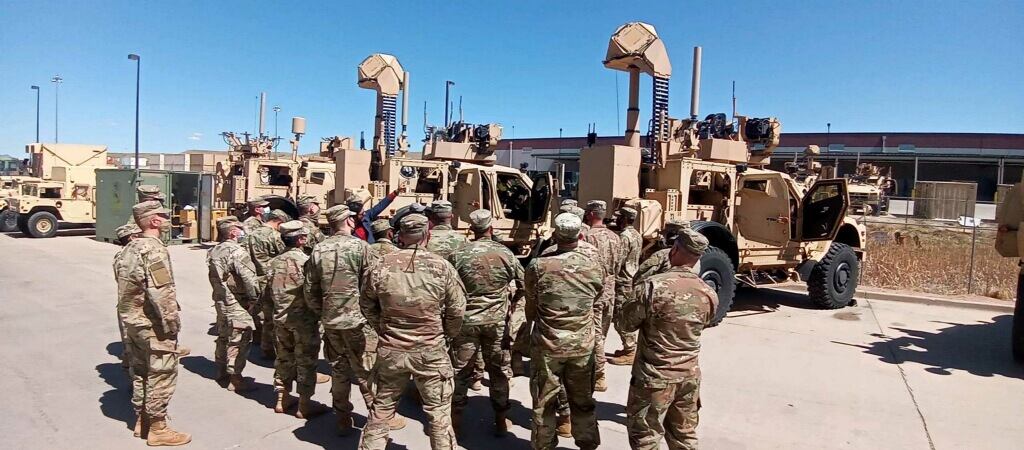ARLINGTON, Va. — Part of the U.S. Army’s lead role in standardizing anti-drone strategies across the armed forces is a joint training effort on a suite of tools and sensors to jam or take out small unmanned aerial systems.
With a training course in Arizona, as well as a mobile training capability, the Joint C-sUAS Office is teaching war fighters about their options to counter the rising battlefield threat of drones that interfere with operations, conduct intel or carry weapons. The tools developed the various military branches span radio frequency disruptors to vehicle-mounted sensors to find and more accurately target UAS.
“It is a system of systems approach,” said Col. David Morgan, Joint C-sUAS Office division chief for requirements and capabilities. “There’s no one silver bullet that is going to address this.”
Once trained on these various systems, “any joint warfighter — any soldier, sailor, airman, or Marine — should be able to do the very basic things needed to counter a particular threat,” Morgan said.
At a small UAS academy at Yuma Proving Grounds in Arizona, war fighters from across the military get classroom training and hands-on experience with a range of counter-drone tools.
In addition to that two-week, on-site class, five-person mobile training teams also make that learning available to deployed units around the country.
“JCO develops a joint training program in order to ensure that the war fighter has the ability to employ capabilities effectively against an evolving enemy,” said Lt. Col. Jonathan Hester, the office’s capabilities integration branch chief.
Defensive tools in the mix include the Dronebuster family of radio frequency jammers, which aim to interrupt the control of the drone by overwhelming the control frequency and taking over the drone’s wireless control link. This can force the drone to stop and hover, or to return to the operator.
Another tool, the Smart Shooter, is a fire control system used to significantly increase the accuracy of small arms. A targeting aid, it makes conventional rifles precise enough to hit a moving drone.
RELATED

The training also incorporates a simulation component. Soldiers hone their skills on a simulation of the Mobile-Low, Slow, Small Unmanned Aerial Vehicle Integrated Defeat System, or M-LIDS: A system of sensors and shooters mounted on a Mine-Resistant Ambush Protected vehicle. Other defensive components include radar and infrared cameras, as well as direction-finding sensors, and wireless encrypted communications to tie it all together.
Those threats can vary widely: There are lots of small drones in play, and the technology is evolving rapidly. Hence the need for a system-of-systems approach, which brings multiple defenses to the table, Morgan said.
To make the training effective, JCO is giving special attention to the interoperability of these various systems.
“One of the things that we really focus on here is ensuring that there is a good integration of all those individual systems,” Morgan said. “We’ve put a high emphasis on command and control, to make sure that all those systems are able to talk effectively to each other.”
In making interoperability a top priority, the JCO is able to deliver training that brings together to most current counter-UAS strategies from across the military.
“The services individually are doing great work on this, and part of the JCO’s charge is to find those best practices and then promulgate that information across the department,” Morgan said. “That’s what we need to do in order to keep pace with the technology in a field that is growing very fast.”





